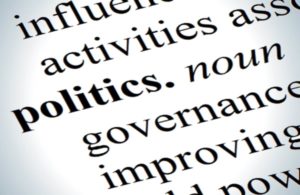A Place for Politics in PR
Published on July 23, 2017, at 2:20 p.m.
by Jessica Banks.
I was recently on the subway in New York when I looked up and saw the Smirnoff ad below. The ad reads, “Made in America. But we’d be happy to talk about our ties to Russia under oath.” Smirnoff, according to its website, was created by one of the most famous vodka makers in Russia and is now available around the world. The political undertone in this advertisement relates to speculations about the Trump administration’s contact with the Russian government during the presidential election. Some people might find this ad humorous, while others classify it as insulting to their opinions.
Would this advertising strategy make someone not buy Smirnoff vodka? Is the political reference too much for some buyers? Where is that fine line?
An example of a political PR campaign that might have gone too far was when model Kendall Jenner partnered with Pepsi in one of its commercials. The theme of this commercial seemed innocent, as it depicted scenes of a peaceful protest, but the negative reaction from the public derived from the lack of representation of an actual protest. There was no struggle, violence or any indication that a real-life protest would not come equipped with skilled dancers and bubbles.
The commercial caused outrage everywhere, but specifically within the black community. Individuals took to social media to state their disapproval with the ad. Dr. Martin Luther King’s youngest daughter Bernice King tweeted, “If only daddy had known about the power of #Pepsi” to communicate her feelings toward the advertisement.
Negative responses from so many of its customers led Pepsi to remove the commercial from circulation. The company released an apologetic statement to the public, explaining its intention to send the message of “unity, peace and understanding.”
However, political references in advertisements do not always hurt a company’s image. During the Super Bowl of 2014, Coca-Cola premiered an advertisement with individuals of different ethnicities singing “America the Beautiful” in various languages. This commercial signified the importance of taking pride in a country that offers so much diversity. It ended with the message “Together is beautiful” positioned next to the Coca-Cola logo.
“I think that the goal of any advertisement is to be truthful and represent your brand to the best of your ability. By adding all of these underlying messages and meanings, I think the company is overall distracting their customers from the products they are trying to buy,” Cheryl Caplinger, director of marketing and development at the Alabama Symphony Orchestra, said in reaction to the Pepsi ad.
In fact, a majority of the advertisements with political implications are focused more on the message than their own products and services. Are commercials with political references transforming into public service announcements? Are companies choosing to sell their opinions rather than their products?
While many companies have thrown their opinions to the public in hopes of positive reactions, thousands choose to remain silent. Since picking a side generally results in losing a portion of your customers, it is understandable why they would not risk limiting their reach.
Delaney Henson, marketing representative at Surgical Information Systems in Atlanta, Georgia, said, “I don’t think that an ad should be directly picking a political issue, but just as people have the freedom of speech, so do companies. [Company opinions] just come with a lot more opportunity for scrutiny.”
Henson brings up the interesting point of risk when it comes to advertising, which Eliza Williams reinforces in her discussion of the bold debut of clothing line Diesel’s recent advertisement campaign in a Creative Review article. Titled “Make Love Not Walls,” the campaign concentrates on celebrating ethnicity in the United States, indirectly, yet obviously, dissing President Trump’s mission of building a wall in Mexico, Williams notes.
This political statement links the fashion brand to the opposing side of the president’s future plans. It could attract new Diesel customers to the brand if their opinions reflected the same message, but could also drive away current customers who support the direction of the president’s ideas.
Is it smart to pick a side, knowing that you are risking customer satisfaction depending on your decision? Or is the alternative of staying neutral in a world of highly opinionated people the safer bet?
As a company, it is important to weigh the pros and cons of any business decision, especially when politics are involved. The ending objective of any public relations campaign is to disseminate a message and connect with a target audience. Regardless of whether you are eliminating a percentage of your target public or changing it all together, whoever interprets your message is your current audience. Representing a particular side in a relevant current issue can make or break your company’s image, so factoring all risks will only help increase the reward.






